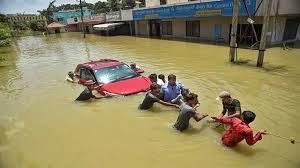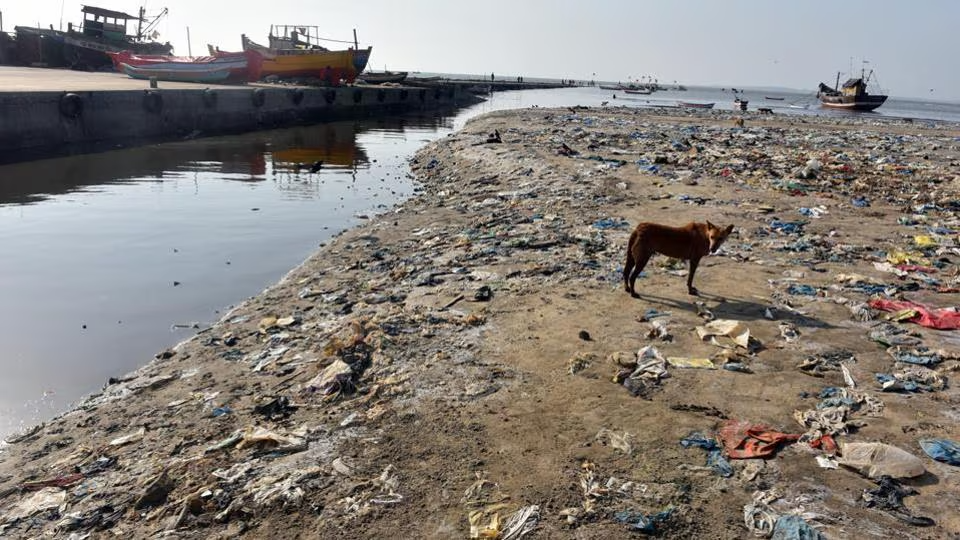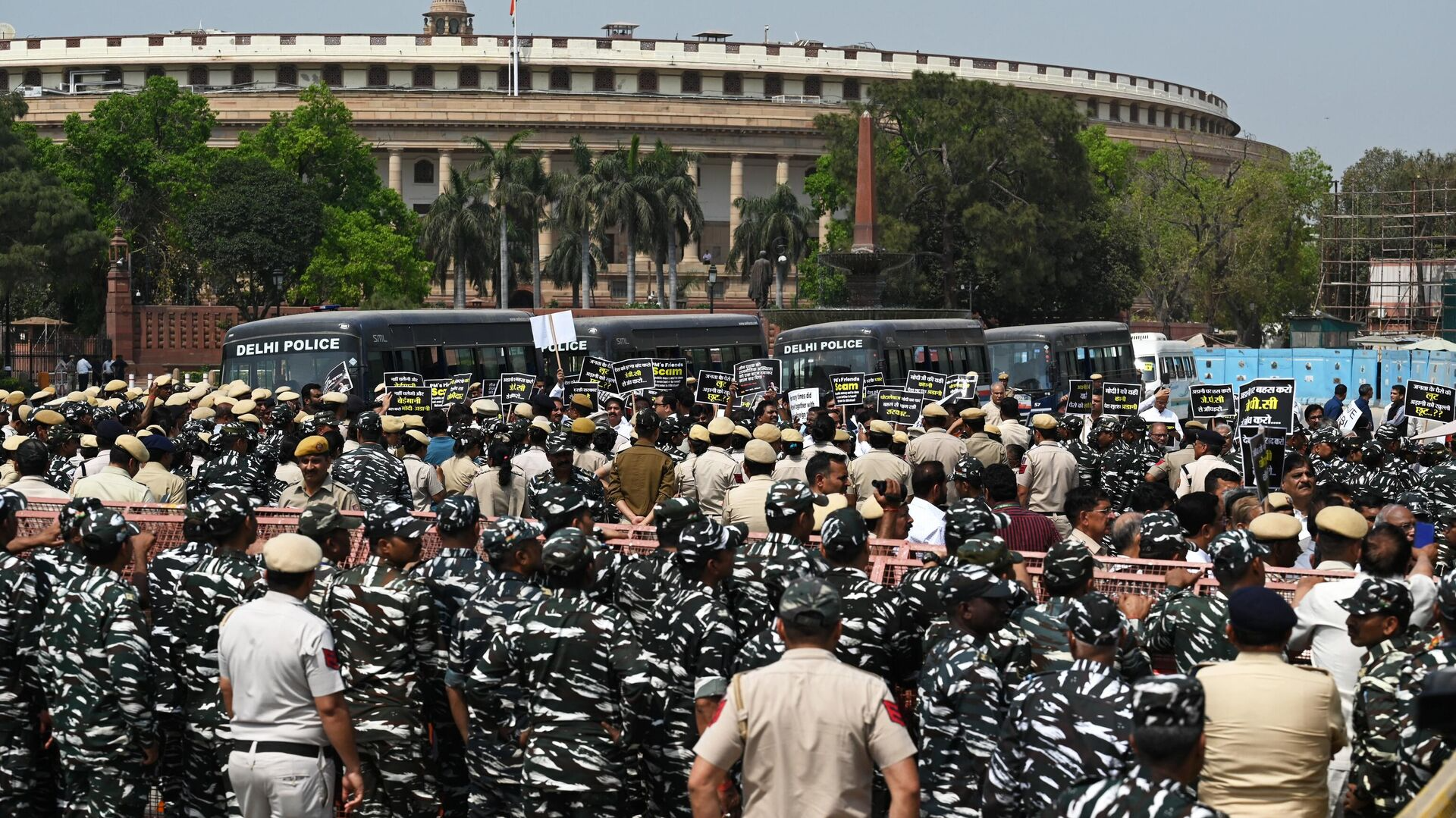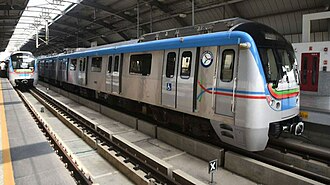Bengaluru Floods After Heavy Rain
Posted On July 11, 2025

Bengaluru Floods After Heavy Rain- A Recurring Nightmare for the Tech Capital
India's Silicon Valley, Bengaluru, has once again been brought to its knees by incessant heavy rainfall, transforming its bustling streets into raging rivers and exposing the deep-seated vulnerabilities in its urban infrastructure. This latest episode of widespread flooding, occurring even as the official monsoon season begins, serves as a grim reminder of a recurring nightmare that continues to plague the city, causing significant disruption, economic losses, and distress to its millions of residents. The familiar scenes of submerged vehicles, inundated homes, and stranded commuters highlight a systemic failure that defies the city's aspirations as a global tech hub.
The deluge, triggered by intense cloudbursts and sustained downpours over the past 24-48 hours, has overwhelmed Bengaluru's already strained drainage systems. Areas particularly hard-hit include major IT corridors like Sarjapur Road, Bellandur, Marathahalli, and Mahadevapura, alongside upscale residential neighborhoods and commercial hubs. Reports indicate that some areas received over 100-150 mm of rain in a short span, far exceeding the 70 mm capacity for which Bengaluru's stormwater drains (rajakaluves) were originally designed. This immense volume of water, with nowhere to go, rapidly transformed roads into canals, underpasses into treacherous pools, and even flooded apartment basements and ground-floor homes.
The root causes of Bengaluru's perennial flooding woes are multifaceted and deeply entrenched in years of unplanned and rapid urbanization. Historically, Bengaluru was known as the 'city of a thousand lakes,' boasting an intricate network of interconnected tanks and natural drains that efficiently managed rainwater. However, decades of unchecked development, rampant encroachment on lakebeds and stormwater drains, and the concretization of vast land parcels have severely disrupted this natural hydrological system. Builders have constructed over old lakebeds and narrowed vital rajakaluves, effectively blocking the natural flow paths of water and turning historical flood mitigation zones into high-risk areas.
Adding to the problem is the sheer scale of concretization across the city. Geologists and urban planners point out that the continuous construction of high-rise buildings, with deep foundations and multi-level basements, has created a thick, impervious concrete layer beneath the city. This layer significantly prevents rainwater from percolating into the ground and recharging groundwater tables, forcing a larger volume of surface runoff directly into an inadequate drainage network. The alteration of the city's natural topography and slopes due to this extensive construction further exacerbates the problem, channeling water into unexpected areas and overwhelming existing infrastructure.
The impact of these floods on daily life and the city's economy is devastating. Commuters faced gridlock for hours, with key arterial roads and elevated expressways becoming impassable. Public transport services, including bus routes, were severely disrupted, leading to widespread delays and missed appointments. For residents in low-lying areas, the damage to homes and property is substantial, with personal belongings, vehicles, and even essential documents lost or damaged. The recurring nature of these floods has also begun to erode Bengaluru's image as a reliable business destination, raising concerns among global companies about lost workdays and disrupted operations. Real estate trends are also shifting, with prospective buyers increasingly scrutinizing flood-risk maps before making investments.
Citizen frustration is palpable, often boiling over on social media platforms where residents share harrowing videos and images of the inundation. There is a strong sense of betrayal and exasperation, with many questioning the accountability of civic bodies and urban planning authorities. The public outcry often highlights the irony of Bengaluru being India's "tech capital," boasting innovations from AI to drone delivery, yet failing to implement basic, functional civic infrastructure like a robust drainage system. The absence of elected city leaders for extended periods has also been cited as a factor, with a perceived lack of direct accountability for civic failures.
In response to the crisis, government agencies, including the Bruhat Bengaluru Mahanagara Palike (BBMP) and the State Disaster Response Force (SDRF), have deployed resources for rescue and relief operations. Boats, tractors, and earthmovers were pressed into service to evacuate stranded residents from flooded localities. Deputy Chief Minister D.K. Shivakumar stated in May 2025, following a similar pre-monsoon deluge, that 70% of identified flood-prone areas had been addressed, with work ongoing in others. Efforts include desilting stormwater drains, removing encroachments, and constructing new drain networks, with substantial funds allocated for these projects. However, the recurring nature of the floods indicates that these measures are either insufficient, incomplete, or not keeping pace with the rapid urban expansion and changing climatic patterns.
The Bengaluru floods serve as a stark warning and a call to action. Long-term solutions demand a comprehensive approach that prioritizes robust urban planning, strict enforcement of building codes, and the urgent restoration and rejuvenation of the city's natural water bodies and drainage channels. This includes clearing all encroachments on lakes and rajakaluves, investing in climate-resilient infrastructure designed for increased rainfall intensities, promoting rainwater harvesting at scale, and fostering better coordination among various civic agencies. Without a decisive and sustained commitment to addressing these fundamental issues, Bengaluru risks not only its economic standing but also the livability and safety of its vibrant population with every heavy downpour.
India's Silicon Valley, Bengaluru, has once again been brought to its knees by incessant heavy rainfall, transforming its bustling streets into raging rivers and exposing the deep-seated vulnerabilities in its urban infrastructure. This latest episode of widespread flooding, occurring even as the official monsoon season begins, serves as a grim reminder of a recurring nightmare that continues to plague the city, causing significant disruption, economic losses, and distress to its millions of residents. The familiar scenes of submerged vehicles, inundated homes, and stranded commuters highlight a systemic failure that defies the city's aspirations as a global tech hub.
The deluge, triggered by intense cloudbursts and sustained downpours over the past 24-48 hours, has overwhelmed Bengaluru's already strained drainage systems. Areas particularly hard-hit include major IT corridors like Sarjapur Road, Bellandur, Marathahalli, and Mahadevapura, alongside upscale residential neighborhoods and commercial hubs. Reports indicate that some areas received over 100-150 mm of rain in a short span, far exceeding the 70 mm capacity for which Bengaluru's stormwater drains (rajakaluves) were originally designed. This immense volume of water, with nowhere to go, rapidly transformed roads into canals, underpasses into treacherous pools, and even flooded apartment basements and ground-floor homes.
The root causes of Bengaluru's perennial flooding woes are multifaceted and deeply entrenched in years of unplanned and rapid urbanization. Historically, Bengaluru was known as the 'city of a thousand lakes,' boasting an intricate network of interconnected tanks and natural drains that efficiently managed rainwater. However, decades of unchecked development, rampant encroachment on lakebeds and stormwater drains, and the concretization of vast land parcels have severely disrupted this natural hydrological system. Builders have constructed over old lakebeds and narrowed vital rajakaluves, effectively blocking the natural flow paths of water and turning historical flood mitigation zones into high-risk areas.
Adding to the problem is the sheer scale of concretization across the city. Geologists and urban planners point out that the continuous construction of high-rise buildings, with deep foundations and multi-level basements, has created a thick, impervious concrete layer beneath the city. This layer significantly prevents rainwater from percolating into the ground and recharging groundwater tables, forcing a larger volume of surface runoff directly into an inadequate drainage network. The alteration of the city's natural topography and slopes due to this extensive construction further exacerbates the problem, channeling water into unexpected areas and overwhelming existing infrastructure.
The impact of these floods on daily life and the city's economy is devastating. Commuters faced gridlock for hours, with key arterial roads and elevated expressways becoming impassable. Public transport services, including bus routes, were severely disrupted, leading to widespread delays and missed appointments. For residents in low-lying areas, the damage to homes and property is substantial, with personal belongings, vehicles, and even essential documents lost or damaged. The recurring nature of these floods has also begun to erode Bengaluru's image as a reliable business destination, raising concerns among global companies about lost workdays and disrupted operations. Real estate trends are also shifting, with prospective buyers increasingly scrutinizing flood-risk maps before making investments.
Citizen frustration is palpable, often boiling over on social media platforms where residents share harrowing videos and images of the inundation. There is a strong sense of betrayal and exasperation, with many questioning the accountability of civic bodies and urban planning authorities. The public outcry often highlights the irony of Bengaluru being India's "tech capital," boasting innovations from AI to drone delivery, yet failing to implement basic, functional civic infrastructure like a robust drainage system. The absence of elected city leaders for extended periods has also been cited as a factor, with a perceived lack of direct accountability for civic failures.
In response to the crisis, government agencies, including the Bruhat Bengaluru Mahanagara Palike (BBMP) and the State Disaster Response Force (SDRF), have deployed resources for rescue and relief operations. Boats, tractors, and earthmovers were pressed into service to evacuate stranded residents from flooded localities. Deputy Chief Minister D.K. Shivakumar stated in May 2025, following a similar pre-monsoon deluge, that 70% of identified flood-prone areas had been addressed, with work ongoing in others. Efforts include desilting stormwater drains, removing encroachments, and constructing new drain networks, with substantial funds allocated for these projects. However, the recurring nature of the floods indicates that these measures are either insufficient, incomplete, or not keeping pace with the rapid urban expansion and changing climatic patterns.
The Bengaluru floods serve as a stark warning and a call to action. Long-term solutions demand a comprehensive approach that prioritizes robust urban planning, strict enforcement of building codes, and the urgent restoration and rejuvenation of the city's natural water bodies and drainage channels. This includes clearing all encroachments on lakes and rajakaluves, investing in climate-resilient infrastructure designed for increased rainfall intensities, promoting rainwater harvesting at scale, and fostering better coordination among various civic agencies. Without a decisive and sustained commitment to addressing these fundamental issues, Bengaluru risks not only its economic standing but also the livability and safety of its vibrant population with every heavy downpour.












